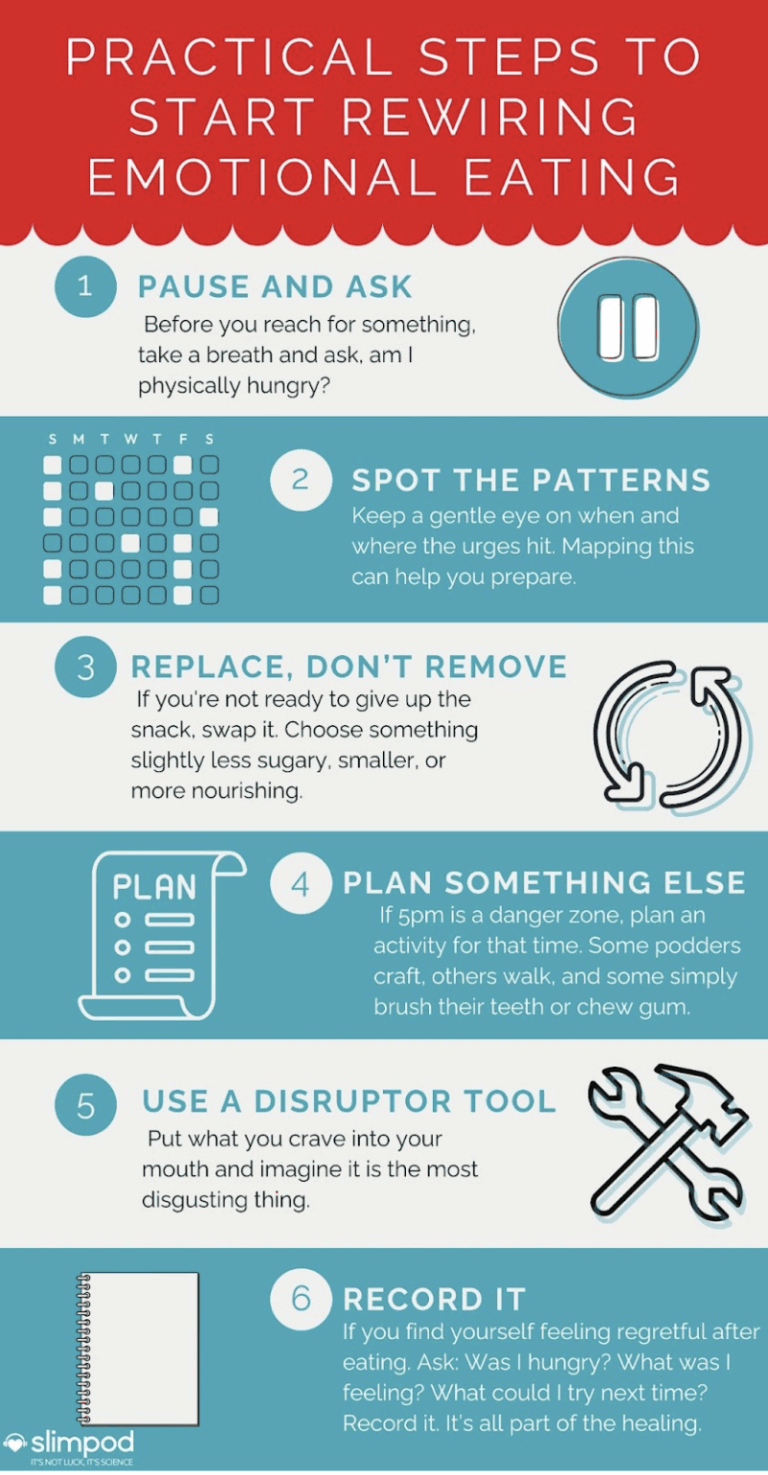What Emotional Eating Really Is
Emotional eating is often misunderstood. It’s not just about turning to food when we’re feeling low. It’s also the celebratory cake, the ‘I’ve earned it’ chocolate, the glass of wine to unwind, or the nibbles that happen because we’re simply bored. It’s any time we eat to shift a feeling – not because we’re physically hungry, but because we want to feel different.
This kind of eating can become so automatic that we don’t even realise we’re doing it. One moment we’re opening the cupboard, the next we’re halfway through a packet of biscuits wondering how we got there.
And no – this isn’t about willpower. It’s about patterns, associations, and emotional wiring that can run deep.
Why It Happens
For many of us, food was love. It was comfort, a reward, a distraction. We learned, often without realising, that food could fill more than just hunger.
I know this all too well. My parents ran a grocery shop and would give me chocolate to keep me quiet while they worked. It felt like a stand-in for care and attention – and over time, chocolate became the comfort I turned to, especially when I was feeling unseen or overwhelmed.
Others tell me they eat when the house is finally quiet. Or during that mid-afternoon lull. Or when the stress of the day comes crashing in the moment they sit down.
And then there’s boredom – one of the biggest triggers, but so easily dismissed. That mindless grazing during Zoom calls, or snacking just because it breaks up the monotony.
All of it is emotional eating.
Why It Feels So Hard to Stop
Because it’s not just about the food. It’s about the feeling. The food gives us something. A distraction. A soothing. A hit of relief.
So trying to tackle emotional eating by simply removing the food… rarely works for long.
That’s where Slimpod comes in. This programme doesn’t focus on the food. It focuses on gently rewiring the associations in your mind, so that over time, food loses its emotional pull. And it happens quietly – often without you even noticing at first.
Special opportunity
If you’ve ever eaten to soothe pain or silence shame—you’re not alone. Emotional eating isn’t weakness. It’s a response. And when we begin to meet ourselves with kindness instead of criticism, things start to shift.
Which is why I’m so excited to share something special.
I recently met Dr Tara Porter, a brilliant psychologist who spent 28 years in the NHS specialising in emotional eating and mental health. She’s the author of You Don’t Understand Me, a Sunday Times bestseller that’s helped thousands of young women feel seen and heard.
Tara’s joining me for a powerful podcast conversation—and we’d love you to be part of it.
Please let us know your interest here.
Together, we’ll unpack the emotional roots of eating struggles, perfectionism, and how to start healing your relationship with food.
This is one not to miss. Let’s keep making space for truth, growth, and feeling good enough—without food having to carry the weight.
Practical Steps to Start Rewiring Emotional Eating
These strategies can gently support the changes already happening beneath the surface:
- Pause and Ask
Before you reach for something, take a breath and ask, am I physically hungry? It might feel awkward at first. But even asking is progress. You’re learning to notice – and that’s powerful. - Spot the Patterns
Keep a gentle eye on when and where the urges hit. Is it every evening after the kids go to bed? Mid-morning when work gets stressful? Mapping this can help you prepare, not react. - Replace, Don’t Remove
If you’re not ready to give up the snack, swap it. Choose something slightly less sugary, smaller, or more nourishing. It’s not about perfection – it’s about starting somewhere safer. - Plan Something Else
If 5pm is a danger zone, plan an activity for that time. Some podders craft, others walk, and some simply brush their teeth or chew gum. These small shifts add up. - Use a Disruptor Tool
One trick I used when chocolate was my go-to? I’d hold it in my mouth and imagine it was an oyster. The smell, the texture… I won’t go into detail, but it worked. It helped to break the automatic link. - Record Your Reflections
If you find yourself feeling regretful after eating, don’t bury it. Gently ask: Was I really hungry? What was I feeling? What could I try next time? Write it, sketch it, speak it aloud. It’s all part of the healing.

And If It Happens Again…
That’s okay. This is not about getting it right every time. It’s about building trust with yourself. The kind that says, I notice. I learn. I keep going.
Because healing your relationship with food doesn’t happen through force. It happens through kindness, repetition, and the right tools.
Slimpod was created for this. Not to give you rules – but to give you relief. To help your brain find peace around food, and your body to feel safe again.
You’re not broken. You’re just unlearning something that took years to build. And every time you notice, pause, or try something different – even just once – you’re already changing.
From Emotional Eating to Emotional Freedom – Alex’s Story
If emotional eating has ever felt like the one thing you just can’t shake—please take a few minutes to watch Alex’s story. It’s powerful.
Before Slimpod, she was stuck in a painful cycle of using food to numb emotions—guilt, shame, sadness. Sound familiar? It’s where so many of us start. But what makes Alex’s journey so inspiring isn’t just the three and a half stone she’s lost—it’s how she learned to feel her emotions rather than feed them.
“I used to eat for that instant hit,” she says. “But afterwards? I’d feel awful. Now, when I run, there’s no instant reward—but afterwards, I feel amazing.”

Watch or listen to the full story below—you’ll come away feeling hopeful, inspired, and just that little bit more ready.
Let me know in the comments: What’s one time you noticed you were eating emotionally – and what helped you shift in that moment? Sharing can help others!





3 thoughts on “How to Understand and Overcome Emotional Eating – A Practical Guide”
I can’t see the video for some reason?
Me neither!!
I can see it on YouTube